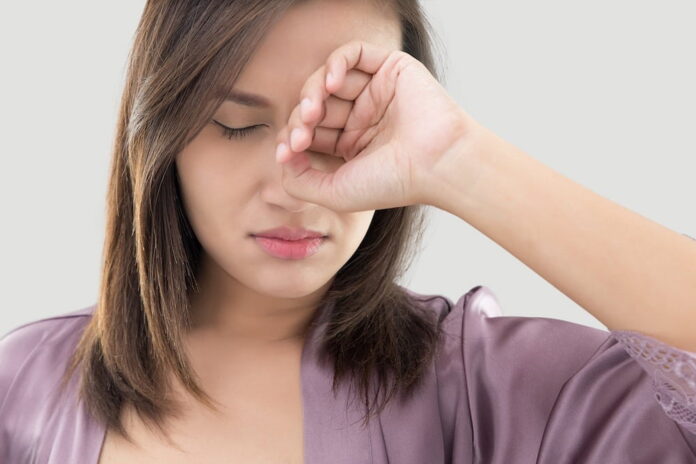Blepharitis is a form of eyelid irritation that produces symptoms that range in severity. It is caused by several underlying factors. Demodex Blepharitis is a common form of the condition resulting from an overpopulation of Demodex mites. Symptoms can be managed with topical treatments and oral medications, while effective antiparasitics, including Cliradex towelettes, reduce the number of mites on the skin.
How Cliradex Towelettes Treat Blepharitis
Cliradex products contain effective ingredients that are designed to treat Demodex-related conditions, such as DB. They also work very well to soothe the irritation and redness associated with other forms of blepharitis. Cliradex uses 4-terpineol, which is gentle on the skin. The wipes and foam are also easy to use, making them an ideal solution for many people. However, to understand how Cliradex towelettes work to treat blepharitis, you must first learn about the condition.
Facts About Blepharitis
Blepharitis is incredibly common, with some reports indicating that as many as half of people visiting eye care providers have the condition. It is characterized by inflammation, redness, irritation, and burning or stinging sensation. Many people also experience occasional blurry vision.
Causes of Blepharitis
Several factors cause blepharitis. Gentle cleansing with Cliradex towelettes can help reduce irritation in most cases of blepharitis and treat the underlying cause in certain situations. These include:
• Bacterial infection — This is a common cause of blepharitis. When bacteria take hold in or around the eyelid, it causes infection, which, in turn, leads to irritation and inflammation. This is treatable with antibiotics. One particular form, staphylococcal blepharitis, is most commonly seen in female patients.
• Allergies — Allergies can lead to irritation and dryness of the eye area. Antihistamines can help relieve allergy symptoms but may contribute to dry eye symptoms.
• Hypersensitivity — Some individuals have exceptionally sensitive skin. In these cases, even a minor disturbance can lead to irritation.
• Demodex mites — Some cases of blepharitis are caused by an overpopulation of the Demodex mites that inhabit human skin. This condition is known as Demodex Blepharitis. It is manageable with certain medical procedures and topical treatments such as Cliradex towelettes.
What Demodex Mites Are and Where They Live
The Demodex mites behind DB are tiny parasites that inhabit human skin. They are typically found around the eyes, including in eyelash follicles and sebaceous glands. Two types of Demodex live on people: D. folliculorum and D. brevis.
Both types of mites have a tube-like body and four pairs of legs. Each leg has a claw-like gripper at its end. These grippers are ideally suited for clinging to eyelashes and burrowing into the skin. Additionally, Demodex’s simplified digestive system cannot process waste, so they regurgitate any onto nearby skin.
Both mites have an approximately three-week life span, two of which are spent as eggs. These eggs often contribute to symptoms by clogging gland openings and mixing with waste and oil to form collarettes. Cliradex towelettes effectively reduce the number of Demodex present to help relieve symptoms.
D. folliculorum
This is the larger of the two species of mites, measuring between 0.3 and 0.4 millimeters. As its name suggests, it lives in hair and eyelash follicles. D. Folliculorum lays its eggs at eyelash bases which can contribute to collarettes forming.
D. brevis
D. brevis is slightly smaller, measuring about 0.2 millimeters in length. It is found in sebaceous glands on the face and eyelid area. It lays eggs at the entrance to these glands, which can cause blockages.
Who Is At Risk of Developing DB
Since everyone will eventually have Demodex mites, anyone may develop DB. However, despite large mite populations, many people never exhibit symptoms associated with the condition. Certain risk factors that may increase the likelihood of a DB diagnosis have been established.
The most significant risk factor for DB is age. In one study, every patient over 70 had evidence of Demodex infection. These include having pale skin or underlying health conditions that compromise immune function. Individuals with multiple risk factors can benefit from a preventative regimen that includes Cliradex towelettes.
Co-Occurring Disorders
Many individuals diagnosed with DB also experience other eye surface disorders. For example, ocular rosacea, meibomian gland dysfunction and dry eye are all commonly diagnosed alongside blepharitis. Additionally, conditions such as herpetic keratitis and conjunctivitis may be associated with DB, particularly when they do not respond to conventional treatments.
Other Factors That Contribute to DB
Environmental conditions, such s exposure to direct sunlight and frequent temperature changes, may contribute to DB and eyelid irritation. Additionally, certain lifestyle factors can also increase a person’s chance of developing DB, including the following:
• Smoking — Smoking is associated with several eye disorders, including ocular rosacea and MGD. A review of smoking and eye diseases showing that virtually all smokers had some form of blepharitis suggests a link with the condition.
• Dietary Choices — Eating certain foods is associated with a higher rate of Demodex Blepharitis diagnoses. For example, frequently eating spicy foods or drinking large amounts of alcohol and hot beverages may predispose an individual to problems with Demodex.
• Stress — There is a direct link between stress and problems with the eye surface. As such, it should not be surprising to learn that stress can compound blepharitis symptoms, including those caused by Demodex.
• Poor Eyelid Hygiene — According to the American Optometric Association, good eyelid hygiene is critical to avoiding blepharitis. Daily use of products containing 4-terpineol, such as Cliradex towelettes, can help reduce the presence of Demodex mites and keep the eye area free of irritation.
How To Treat DB
Luckily, several available treatments effectively treat DB by managing symptoms and reducing the number of mites present on the skin. In addition, many patients succeed with at-home therapies, although some also require additional intervention from medical providers.
Tea Tree Oil as an Effective DB Treatment
Tea tree oil has many beneficial properties that make it excellent for addressing DB. It has anti-inflammatory, antiviral and antibacterial properties that make it perfect for managing symptoms and secondary infections. In addition, its functional ingredient, 4-terpineol, is a proven antiparasitic, so it can also eliminate the mites that cause DB.
TTO is one of only a few topical products that can successfully kill Dmeodex, making it a first line of defense for many patients. In addition, many medical providers recommend using at-home use of tea tree oil-containing products such as Cliradex towelettes to manage Demodex populations and reduce the risk of DB development.
Additionally, research supports using tea tree oil to treat blepharitis and meibomian gland dysfunction. This helps to streamline treatment, which is excellent news for patients who frequently experience these conditions together.
4-Terpineol Gives TTO Its Fighting Power
Tea tree oil gets its medicinal qualities from a high concentration of 4-terpineol. When isolated, this compound is incredibly gentle on the skin, which is essential for people already dealing with irritation and swelling. Products containing 4-terpineol, such as Cliradex foam, show excellent results against Demodex infection.
Additional At-Home Therapies for Symptom Relief
While TTO is the only topical at-home therapy proven to kill Dmeodex, several other treatments can help with symptoms such as inflammation, redness, burning and waxy buildup.
Hypochlorous acid is a popular remedy. It is widely considered safe and helps reduce irritation associated with DB. Additionally, it gently removes collarettes and other debris that can lead to problems such as MGD. HA is commonly found in over-the-counter eye drops, sprays and wipes. These products offer excellent symptom relief; however, unlike Cliradex towelettes, they will not address Demodex infection.
Some oral medications are commonly used to assist with treatment. For example, Omega-3 supplements can help address chronic inflammation associated with DB. They have an excellent safety profile and are readily available in most pharmacies. Other anti-inflammatories, both OTC and prescription, may also be sued to address more acute symptoms. Other oral medications include:
• Antibiotics for patients who develop secondary bacterial infections.
• Vasoconstrictors can help reduce redness and itching associated with blepharitis.
• Antiparasitics may be needed in heavy Dmeodex infections.
In-Office Treatments
Eye care professionals offer several effective in-office treatments for DB. These are often performed as part of a comprehensive treatment plan that also includes products like Cliradex towelettes.
The Zocular Eyelid System Treatment is a gentle exfoliation process that uses an okra-based cleanser. It can help remove a heavy buildup of Demodex eggs and waste, providing relief to patients. Because it is exfoliative, ZEST may also remove a limited number of mites.
The use of heat and pressure, called thermal pulsation, helps to break up waxy buildup blocking sebaceous glands. It provides quick results in a completely non-invasive procedure. Patients can continue to see results by applying warm compresses to their eyes at home.
Intense pulsed light treatments are a painless, non-invasive process that can provide symptom relief. Because IPL alters cell function, the high-intensity light used may also kill Demodex. Eyelid debridement is another procedure that significantly reduces buildup and mite populations. Coupled with Cliradex towelettes, these in-office treatments offer a comprehensive approach to eliminating Demodex and the symptoms they cause.
How Cliradex Towelettes Can Help With DB Symptoms
Demodex Blepharitis is eyelid inflammation and irritation caused by an overpopulation of Dmeodex mites. Symptoms include redness, burning and blurry vision. DB can be effectively managed with Cliradex’s tea tree oil-containing products. Contact us to learn more about how to find relief with Cliradex towelettes.
Read Also
- Understanding the Importance of Routine Health Screenings for SeniorsDid you know that the global routine health screening market is expected to reach $105.93 billion by 2033? This highlights the rising focus on preventive healthcare. As we age, our bodies go through many changes. Staying proactive about health becomes more important with time. Routine health screenings for seniors play a vital role in maintaining… Read more: Understanding the Importance of Routine Health Screenings for Seniors
- Why Modern Retirement Facilities Are Vital for Chronic Disease CareToday’s retirement feels different from the past. Modern communities are bright, active, and full of life. They give seniors comfort while also providing the care needed for health and safety. For those living with long-term conditions like diabetes or heart disease, these places bring both support and peace of mind. Here, life doesn’t slow down-it… Read more: Why Modern Retirement Facilities Are Vital for Chronic Disease Care
- Understanding Breast Cancer Risks and Signs in Older MenMany people associate breast cancer with women. But did you know that breast cancer risk in older men is a significant health concern? Although it is rare, men can develop this disease, especially in later years. Understanding the risks, symptoms, and necessary preventive actions can lead to earlier detection and treatment, ultimately improving survival rates.… Read more: Understanding Breast Cancer Risks and Signs in Older Men
- How to Choose the Perfect Eyewear for Your Face Shape and StyleEyewear has evolved far beyond a simple vision aid—today, it’s a bold statement of personality, professionalism, and fashion sense. Whether you’re selecting your first pair or updating your look, the right frames can enhance your features, elevate your confidence, and even influence first impressions. But with endless options available, how do you find the perfect… Read more: How to Choose the Perfect Eyewear for Your Face Shape and Style
- How to Choose the Right Senior Living Community for Your NeedsHow do you know which senior living community fits your needs best? Choosing the right place can feel tricky with so many options, from independent living to assisted care. It’s important to think about daily routines, medical support, social activities, and the kind of environment that feels safe and welcoming. You also want a place… Read more: How to Choose the Right Senior Living Community for Your Needs
- Breast Cancer Prevention: The Role of Regular ExerciseIn a world where health challenges loom large, the call for proactive steps towards wellness has never been louder. One powerful ally in the fight against breast cancer is regular exercise-a proven strategy that works wonders not just for physical well-being but also for mental resilience. In this article, we delve into how exercise contributes… Read more: Breast Cancer Prevention: The Role of Regular Exercise







